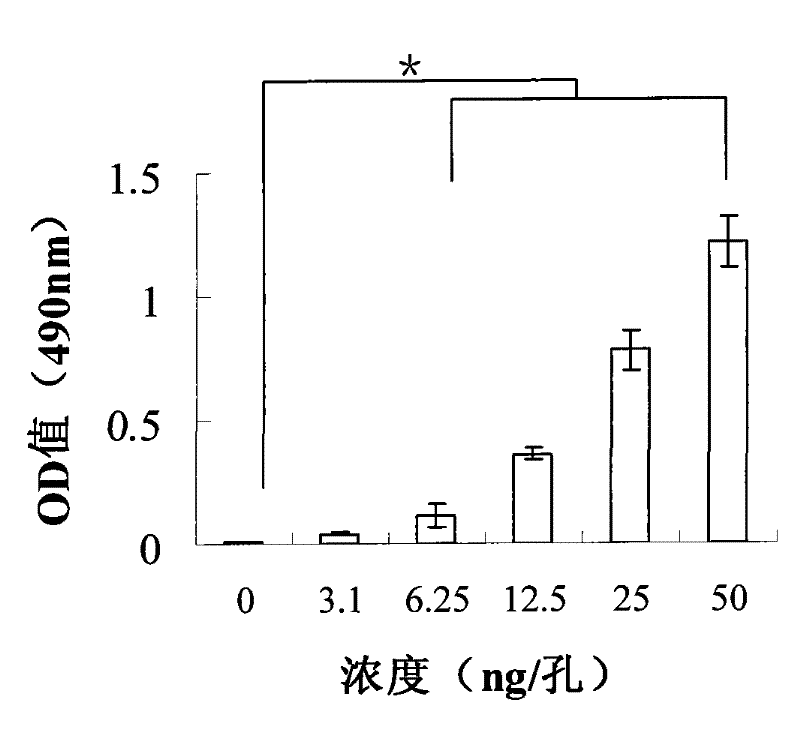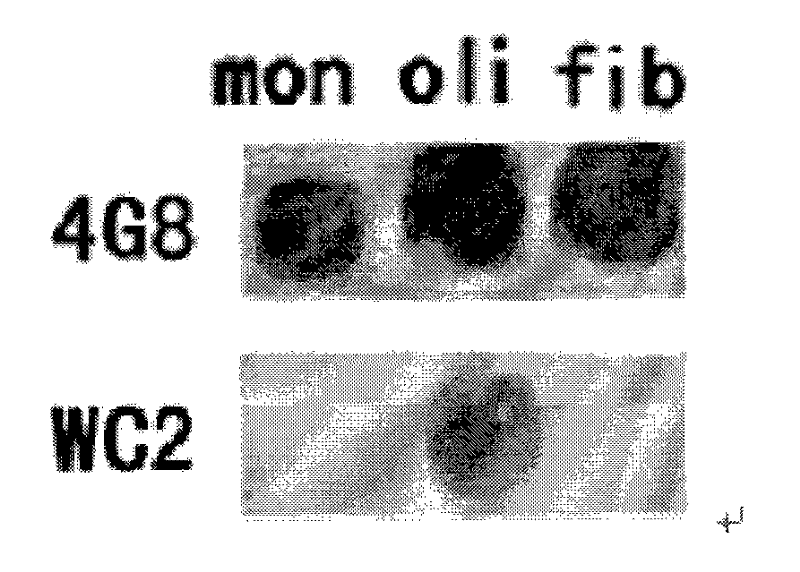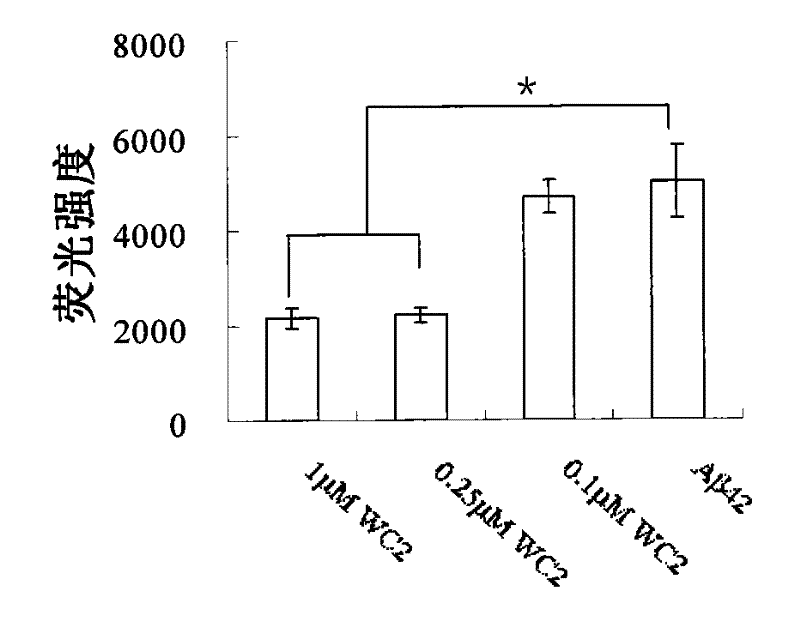Genetically engineered monoclonal antibody specifically binding to a-beta oligomer
A monoclonal antibody and oligomer technology, applied in the direction of antibodies, drug combinations, microorganism-based methods, etc., can solve the problem that the spatial three-dimensional antigen epitope has not been clearly explored, and achieves inhibition of fibrosis aggregation, easy screening, and reduction of Effects of toxic effects
- Summary
- Abstract
- Description
- Claims
- Application Information
AI Technical Summary
Problems solved by technology
Method used
Image
Examples
Embodiment 1A-be
[0049] The preparation of embodiment 1A-beta oligomer
[0050] A-beta monomer (purchased from American Peptide Company, USA) was dissolved in HFIP (hexafluoroisopropanol, purchased from Sigma Company) to prepare a solution with a concentration of 1 mg / ml. Sonicate in a water bath at room temperature for 10 minutes, dispense into 1.5ml centrifuge tubes, place in a fume hood to allow HFIP to evaporate completely, and store at -20°C for later use.
[0051] After the above-treated A-beta was equilibrated at room temperature for 10 minutes, DMSO (dimethyl sulfoxide, purchased from Sigma) was added to fully dissolve A-beta to a final concentration of 1 mg / ml. A certain amount of A-beta was added to PBS buffer at pH 7.4, so that the concentration of A-beta was 10 μM. After incubating the A-beta solution at 37° C. for 12 hours, centrifuge at 14,000 rpm for 20 minutes, and discard the bottom precipitate to obtain the supernatant containing A-beta oligomers. The formation of A-beta ol...
Embodiment 2
[0052] The screening of embodiment 2 positive clones
[0053] The A-beta oligomer obtained in Example 1 was diluted to 10-100 μg / mL with coating buffer (PBS, pH=7.4), and 4 mL was added to an immunotube, and coated overnight at 4°C. Discard the supernatant and wash the tube 3 times quickly with PBS. The immunotube was filled with 3% BSA and sealed vertically for 2 hours at room temperature. Discard the supernatant and wash the tube 3 times quickly with PBS. The phage antibody library (purchased from the MRC center in the UK) was suspended in 4 mL of 3% BSA and added to the immunotube, incubated upside down at room temperature for 1 hour, and then incubated vertically for 1 hour. Wash 10 times with 0.1% Twenn-20 in PBS (20 times for the second round of selection and subsequent washes). After the PBS was blotted dry, 500 μL of trypsin-PBS solution was added to elute the phage, and incubated upside down at room temperature for 10 min. Add 250 μL of the eluted phage to 1.75 mL...
Embodiment 3
[0060] The identification of embodiment 3 antibody
[0061] Abeta monomers, oligomers, and fibrils (Abeta monomers were incubated at 37°C for more than 4 days and verified by atomic force microscopy) were spotted on 3 μL of NC (nitrocellulose) membranes. After the membrane was blocked with 5% BSA, scFv WC2 was added to incubate for 1 hour, and the membrane was washed 3 times with PBS, 5 minutes each time. Add 1:5000 diluted Protein A (purchased from Santa Cruz, USA) and incubate for 1 hour, wash the membrane 3 times with PBST (Tween-20 concentration is 0.1%), 5 minutes each time, and develop color with DAB. Only clones showing spots in A-beta oligomers but not in A-beta monomers and fibrils were desired.
[0062] The above positive clones were sequenced and identified, and the clones that conformed to the basic structure of the antibody in the antibody library were complete single-chain genetically engineered antibodies. The sequencing primers are:
[0063] LMB3: 5'-CAG GAA...
PUM
| Property | Measurement | Unit |
|---|---|---|
| molecular weight | aaaaa | aaaaa |
Abstract
Description
Claims
Application Information
 Login to View More
Login to View More - R&D
- Intellectual Property
- Life Sciences
- Materials
- Tech Scout
- Unparalleled Data Quality
- Higher Quality Content
- 60% Fewer Hallucinations
Browse by: Latest US Patents, China's latest patents, Technical Efficacy Thesaurus, Application Domain, Technology Topic, Popular Technical Reports.
© 2025 PatSnap. All rights reserved.Legal|Privacy policy|Modern Slavery Act Transparency Statement|Sitemap|About US| Contact US: help@patsnap.com



